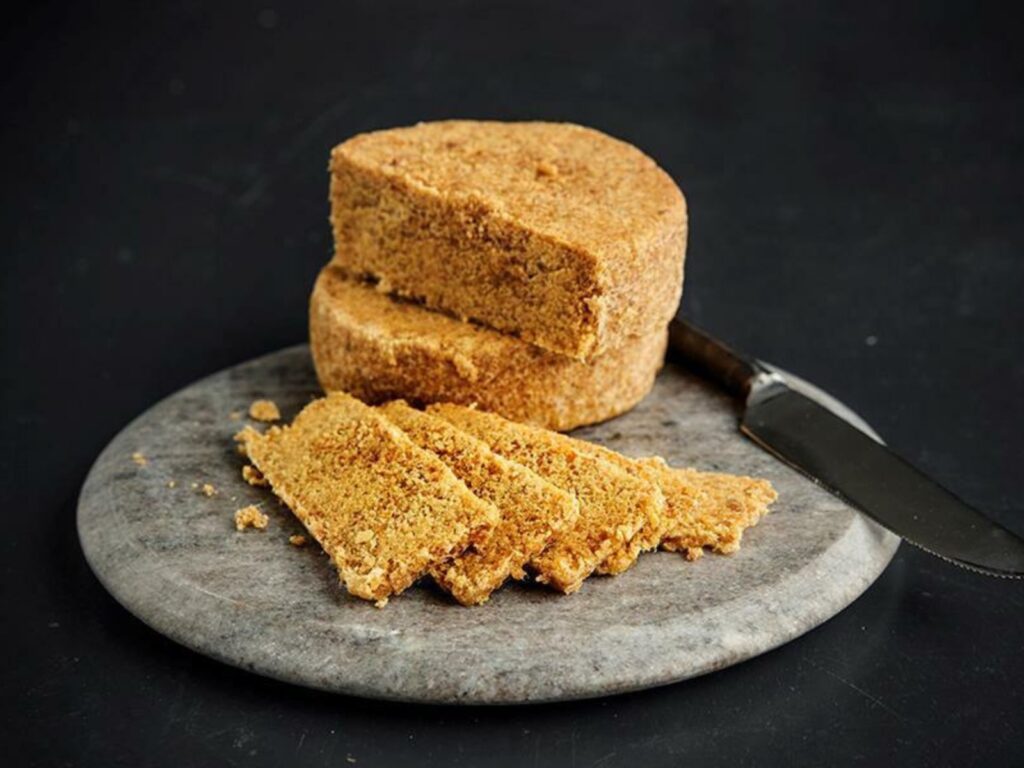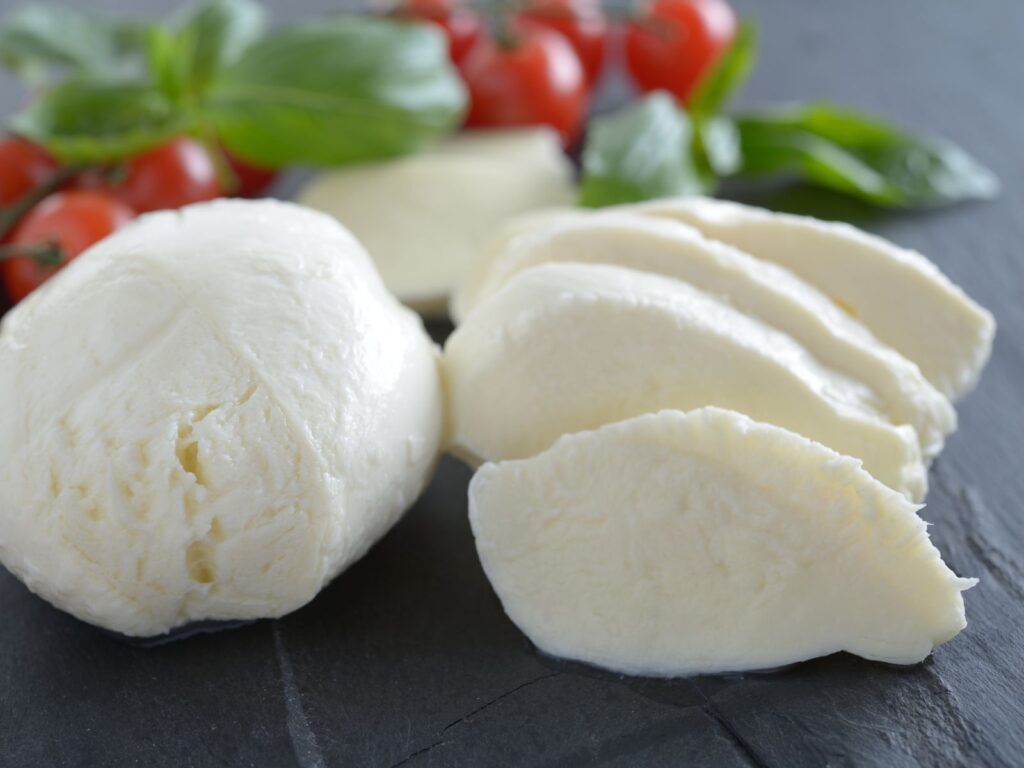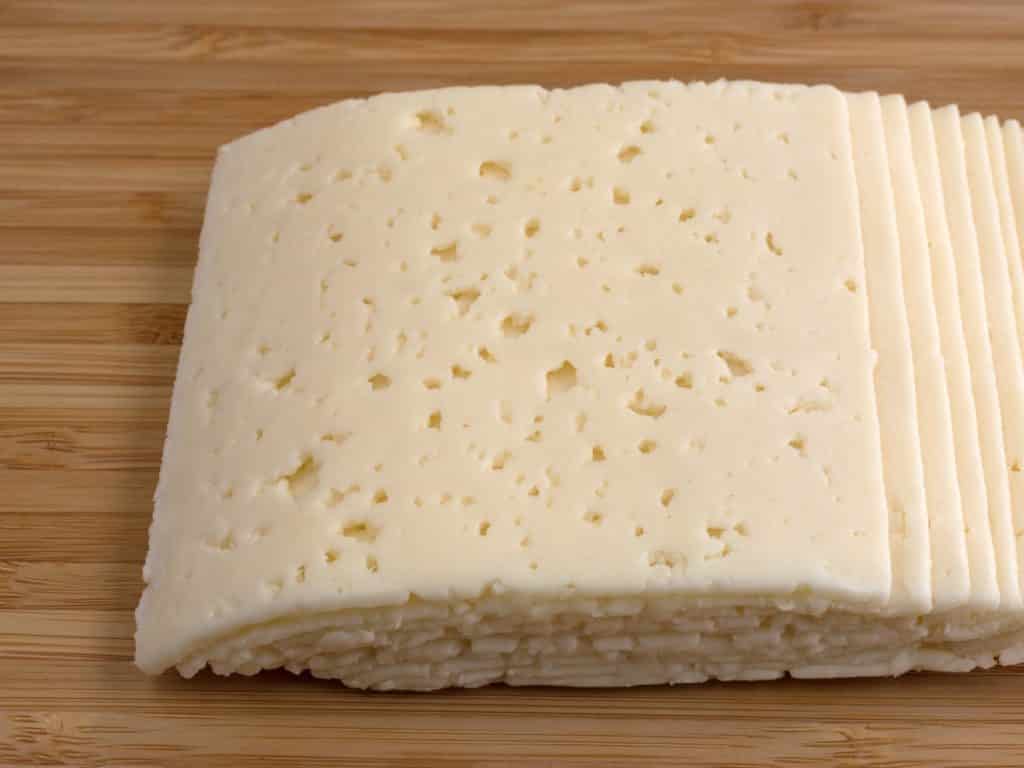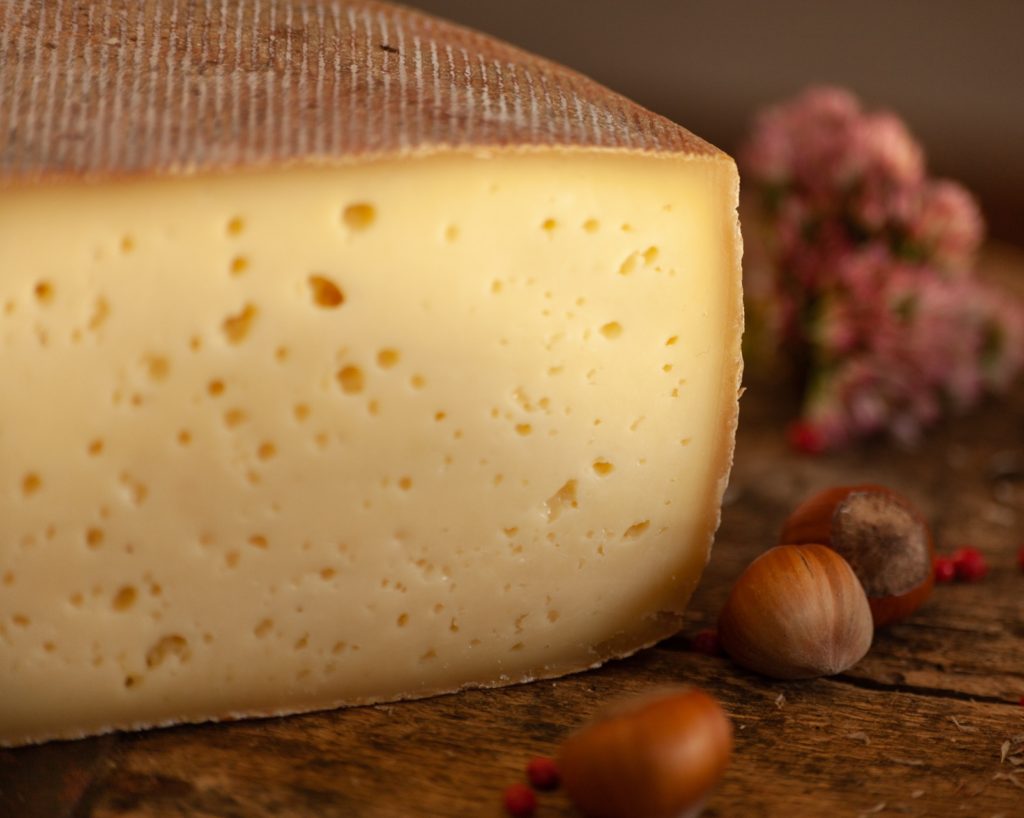
What is Jarlsberg?
Jarlsberg is a pressed cooked cheese that originates from Norway. Because of its iconic spattering of eyes (cheese holes), it is often incorrectly referred to as Swiss cheese.
Since 1956, cheesemakers in Norway have been making this cheese using a secret recipe. As a matter of fact, a handful of trusted people currently guard this decades old recipe.
Over the years, Jarlsberg has become immensely popular around the world with both cheese lovers and chefs.
The cheese’s origins
Jarlsberg’s history can be traced back to the mid-1800s in Norway, but the cheese as we know it today didn’t come into existence until the mid-20th century. The cheese is named after the county of Jarlsberg, where earlier varieties of cheese with large holes, similar to Swiss Emmentaler, were produced in the 1850s.
However, the original recipe for this type of cheese was lost over time. Fast forward to the 1950s, when a team led by professor Ole Martin Ystgaard at the Agricultural University of Norway began working to recreate this style of cheese. After much experimentation, the result was the modern Jarlsberg cheese, which was first marketed in 1956. The team’s goal was to develop a cheese with the characteristic large holes and the rich, nutty flavour reminiscent of Swiss cheeses but with a milder, sweeter twist.
Jarlsberg quickly became popular both in Norway and internationally, and today it is produced in Norway and the United States, available in a variety of forms, from wedges to slices, to suit different needs.
Unique production process
The production of Jarlsberg cheese follows a meticulous process that combines traditional cheesemaking techniques with modern innovations. Made primarily from cow’s milk, the cheese undergoes a specific process of curdling, cutting, heating and pressing to achieve its unique texture and flavour.
One of the most distinctive features of Jarlsberg is its characteristic large holes, or “eyes.” These eyes are formed during the maturation process due to the activity of bacteria used in the cheesemaking process, specifically Propionibacterium freudenreichii. These bacteria consume lactic acid and release carbon dioxide gas, which creates bubbles in the cheese, forming the holes. This process is also what gives Jarlsberg its sweet, nutty flavour.
After the cheese is shaped and salted, it is left to mature for a period ranging from several weeks to months, depending on the desired flavour intensity. During this time, the cheese is stored in cool, humid conditions to allow the bacteria and enzymes to do their work.
What Jarlsberg tastes like
One of the reasons Jarlsberg cheese is so popular is its distinctive, well-balanced flavour profile. The cheese is known for being mild and slightly sweet, with a buttery and nutty flavour that appeals to a wide range of palates. Unlike Swiss cheese, which can have a more pungent taste, Jarlsberg’s sweetness makes it more versatile and approachable. This rings particularly true for people who may find some cheeses too strong or overpowering.
In terms of texture, Jarlsberg is semi-soft and smooth, making it easy to slice, shred or melt. When you bite into it, you’ll notice the subtle creaminess, followed by a lingering nutty aftertaste. This flavour and texture combination makes Jarlsberg an excellent choice for both cold dishes and hot dishes.
How to eat Jarlsberg
Jarlsberg cheese’s versatility is one of its strongest selling points, making it a go-to ingredient in many kitchens worldwide. Here are some of the best ways to use Jarlsberg cheese in your cooking:
Burgers and Sandwiches
Slices of Jarlsberg can elevate any sandwich or burger, bringing a creamy and delicious element that enhances the other ingredients without overpowering them.
Grilled Cheese Sandwiches
Thanks to its excellent melting properties, Jarlsberg is a great cheese to use in grilled cheese sandwiches. Its mild flavour pairs well with a variety of other ingredients, from ham and turkey to tomatoes and avocado.
Cheese Boards
Jarlsberg can be a perfect addition to any cheese board, pairing well with fruits, nuts and crackers. Its nutty sweetness works harmoniously with fresh or dried figs, apples, almonds and walnuts.
Salads
Add some cubed Jarlsberg to a fresh green salad for an extra layer of texture and deliciousness. It pairs particularly well with ingredients like apples, pears and walnuts, making it an ideal choice for autumn salads.
Baked Dishes
Jarlsberg’s melting quality makes it a fantastic cheese to use in baked dishes like quiches, casseroles and gratins. It gives the dish a creamy, gooey texture while adding a mild, nutty taste.
Fondue
Finally, you can use Jarlsberg in a traditional cheese fondue recipe for a twist on the classic. It melts smoothly and adds a sweet, mellow flavour that balances well with the stronger cheeses typically used in fondue, like Gruyère or Emmentaler.
Health Benefits of Jarlsberg Cheese
In addition to its wonderful taste and versatility, Jarlsberg also offers several nutritional benefits. Like many cheeses, it is a good source of protein and calcium, both of which are essential for bone health.
A 1-ounce (28g) serving of Jarlsberg cheese contains about 100 calories, 8 grams of fat, 7 grams of protein, and 200 milligrams of calcium. This makes it a relatively nutrient-dense food that can be a valuable part of a balanced diet when consumed in moderation.
Substitutes for Jarlsberg
Looking for a more artisanal option? Elevate your cheese eating experience by using Comté or Gruyère.
Conclusion
Jarlsberg cheese is much more than a mild, Swiss-style cheese. Its rich history, unique production process, distinctive flavour and versatility make it a favourite among cheese lovers and chefs alike. Whether you’re enjoying it on a cheese board, melting it into a sandwich, or incorporating it into a gourmet recipe, Jarlsberg always delivers a delicious, satisfying experience.
If you haven’t yet added Jarlsberg cheese to your repertoire, now is the perfect time to do so. Its mild, nutty flavour and creamy texture make it an excellent addition to any meal or snack. Plus, with potential health benefits, it’s not only a tasty choice but also a potentially beneficial one for your body!



